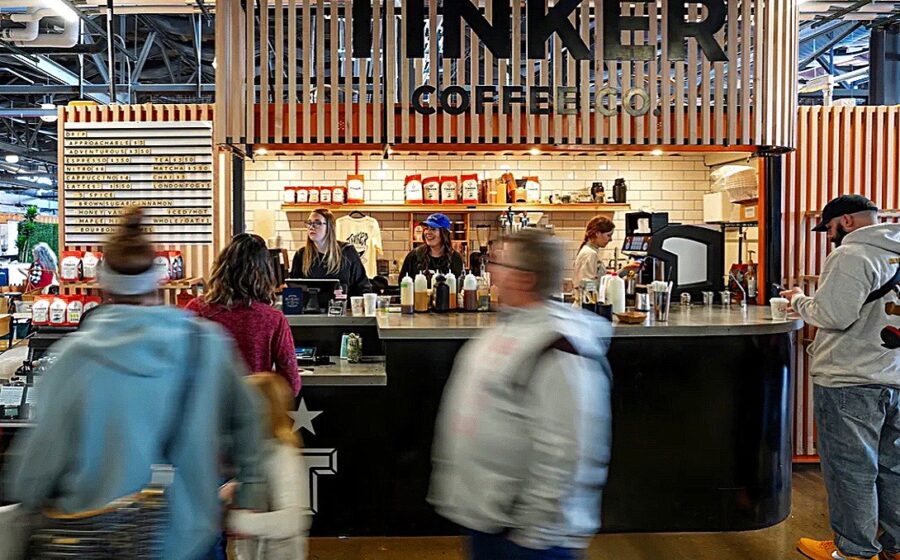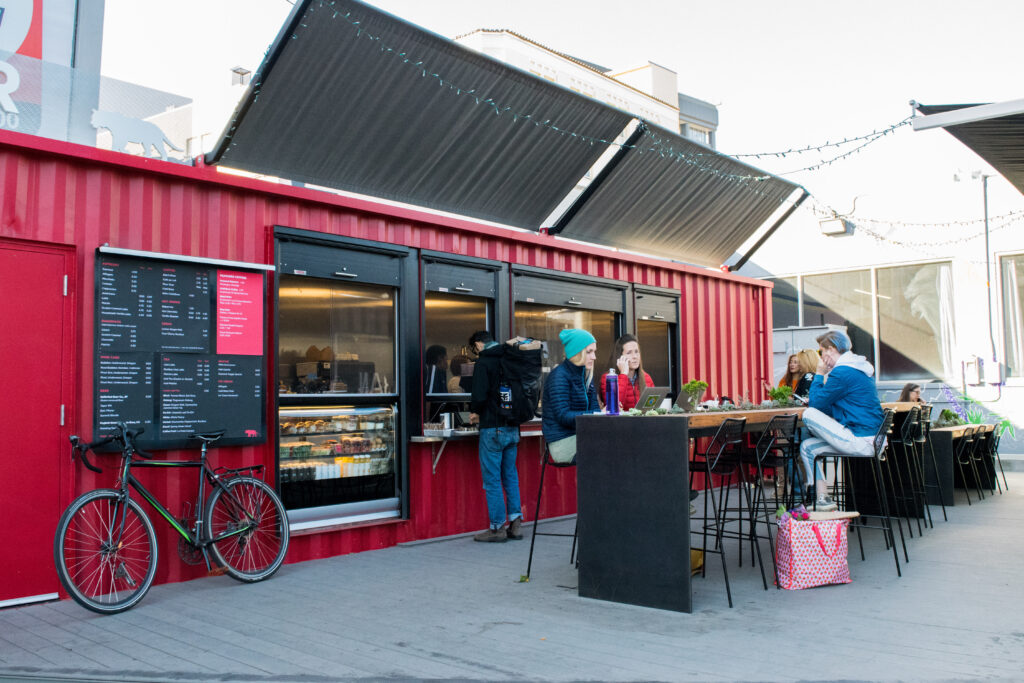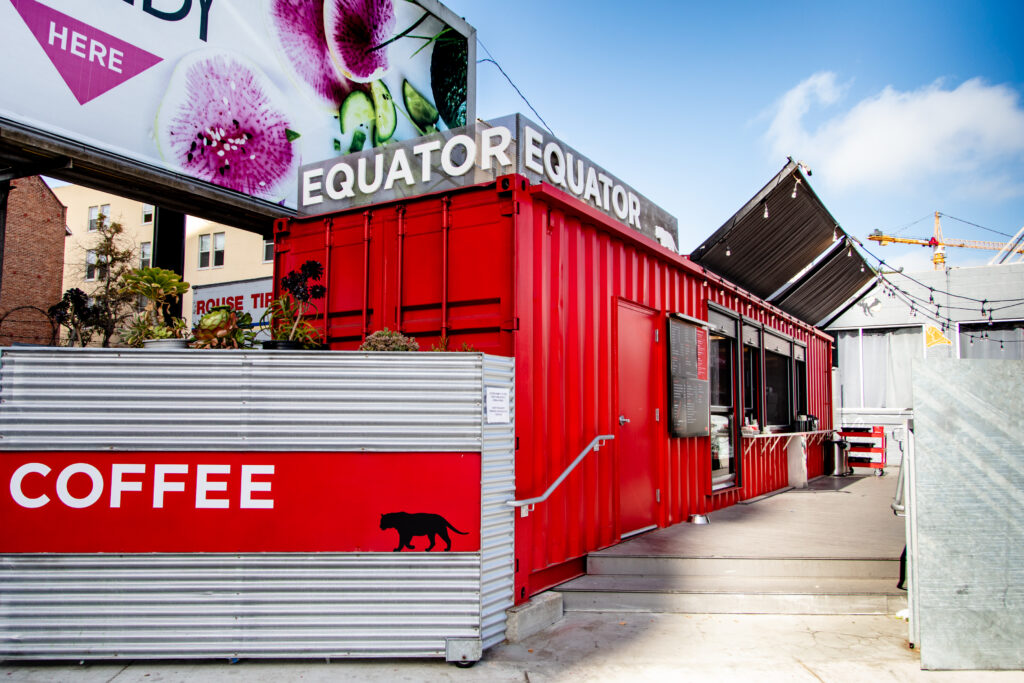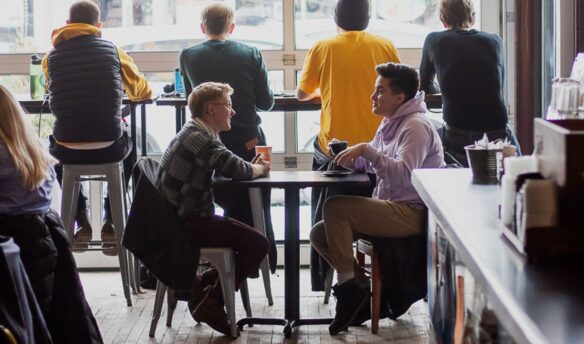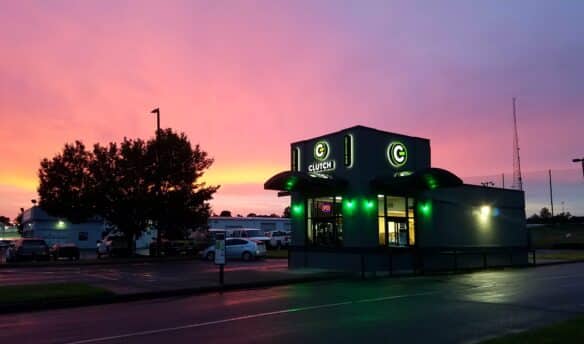Shipping container coffee shops were once seen as a novel idea: many businesses turned to repurposed shipping containers to open shop in unexpected places and avoid expensive buildouts. However, their temporary nature and deviation from traditional café operations raised questions about their long-term viability.
While container coffee shops face their fair share of challenges, they have proven to be more than just a passing trend. Cafés worldwide have embraced this unconventional space to create a fresh coffee-drinking experience and challenge common misconceptions of what defines a successful coffee shop.
From Empty Lot to Coffee Spot: The Inspiration Behind Container Cafés
Container coffee shops began gaining traction in the late 2000s and early 2010s, but architects worldwide had been converting shipping containers into modular homes decades earlier. This style of architecture, sometimes known as cargotecture, emerged alongside the tiny house and sustainable living movement. The rise of shipping container coffee shops is a tale of creativity and resourcefulness, and modern container coffee shops are a testament to the power of repurposing unorthodox materials to create a novel specialty coffee experience.
Many of these container cafés share a common vision: transforming shipping containers into vibrant and welcoming community gathering spaces. According to Devorah Freudiger, the Director of Coffee Culture at Equator Coffees, the opportunity for their Lake Merritt location came to them from an owner of an underutilized space in Oakland, California. “He had a vision to turn five hardly-used parking spots into a vibrant community hub, using the sustainable approach of repurposing shipping containers,” says Freudiger.
Equator Coffees’s multiple locations in the Los Angeles and Bay Area have become a central hub for cycling enthusiasts and locals alike. Their Lake Merritt location is no exception, offering a welcoming space for visitors to enjoy a high-quality cup of coffee. Utilizing a shipping container for this café was a clear choice for Equator and aligned with their commitment to sustainability.
“Using a repurposed shipping container ties in with our goal of having a holistically sustainable company,” says Freudiger. “This container was given a second life and will live on as a café for years to come.”
This same community spirit inspired Tinker Coffee’s first café location inside The AMP, an artisan marketplace and food hall in Indianapolis. The AMP serves as a diverse gathering space for local brands, each operating out of a brightly-colored shipping container.
Tinker Coffee’s Café Manager, Libby Baert, shares that being part of The AMP community puts them at the heart of a thriving ecosystem of established and emerging brands. “It’s allowed us not only to gain our footing as we entered a new realm of operating a café but also to grow and collaborate alongside innovative businesses.”
Traditional Versus Unconventional
While shipping containers have their own charm, they also present unique challenges for café operators. Bringing Equator’s Lake Merritt café to life required careful planning to outfit the container and supply the location with appropriate power.
Outfitting your coffee shop with the tools necessary for brewing a delicious cup of coffee requires substantial power and a reliable filtered water source. “A lot of landlords and developers will suggest ‘dropping’ a shipping container on a site as a means of opening a cafe quickly,” says Freudiger, “but most have little idea of what is involved in terms of building out the container.” The overall cost of your container coffee shop will depend on how much prep your location requires and whether you choose to repurpose an existing container or have one custom-built.
Equator Coffees used containers repurposed by UrbanBloc, which come pre-certified as “ready to serve food” and can go anywhere in California—health department permitting was far easier than a typical brick-and-mortar. “If you’ve built out a café and dealt with the variability of inspectors from the health department, you know that’s a huge win,” says Freudiger.
The property had to get an electrical upgrade before Equator Coffees could start laying power for this container. She shared that it was initially a challenge to bring sufficient utilities to the site since they knew that coffee equipment, air-conditioning, and heaters would require a lot of electricity. Despite this, UrbanBloc and their landlord were able to help resolve the power issue to bring their new café to fruition.
Freudiger says the beauty of container cafés is that they can be where typical retail can’t, such as their location in an underused parking lot. But just because a container can fit on a site doesn’t necessarily mean it would be the best location for a café. “The same concerns around foot traffic, parking, and community-building need to be applied to a container cafe.”
Creative Use of Surrounding Space
When you walk into most brick-and-mortar coffee shops, you probably have a few choices for seating. Meanwhile, container cafés must get creative with the surrounding area to provide ample seating for their patrons.
“Without an interior lobby, we have to make sure our outdoor space is comfortable and inviting,” says Freudiger. “Being right by the lake, we have lots of folks getting their coffee to take with them on a walk, but we always want to have a spot for folks to enjoy their beverages on site.” Equator Coffees’s Lake Merritt location sports a patio roof over their deck seating, while The AMP’s communal tables host Tinker Coffee’s patrons.
Freudiger recommends designing your container with adequate heating and air conditioning capacity to account for being more exposed to the elements. “Our container has a very open front with screened-in windows. This is great for communicating with guests, but the constant changes in temperature and humidity make it a real challenge to keep our three espressos dialed in correctly throughout the day.”
Addressing the Elephant in the Room: The Space Issue
Walking around most metropolitan cities, coffee shops of all shapes and sizes are often nestled in strip malls or standalone buildings. Even the smallest hole-in-the-wall shops find the space to store the essentials for daily operation, such as cups, lids, and fridges for milk.
This space issue was something container operators also had to overcome. “A shipping container is comparatively smaller than most brick and mortar spaces,” says Baert, “which means that we have to work smarter when it comes to storage, the equipment we utilize, and workflow.”
Baert says that Tinker’s largest storage requirement is refrigeration. “[M]aking sure we have room for all of the milk, homemade syrups, kegs, grab-and-go items, and food prep items can feel a little Tetris-like at times.” Ultimately, having limited space allowed them to explore creative ways to use multi-purpose ingredients and be more intentional with their menu offerings.
Equator Coffees faced similar challenges. “We couldn’t compromise on our brewing equipment, so we had to source the smallest possible sinks and fridges and get very creative with storage,” says Freudiger.
A container coffee shop requires efficient use of every inch of space. “Having hooks for personal items, magnetic whiteboard for memos and notes, [and] organizational shelves for the walls and inside of the fridges has been a game changer for us,” recommends Baert. Operators can also use under-counter storage containers to free up valuable counter space and hold extra cups, lids, and beans.
Savvy operators have found ways to transform limited space into an asset. Baert explains the compact layout makes it easy to maintain cleanliness and keep track of inventory. Close quarters can also promote efficient communication and workflow among baristas. “It’s a different team dynamic in a container,” adds Freudiger, “working together in a tight space leads to tight bonds as everyone works together in their choreographed role.”
For those interested in opening a coffee shop soon, it’s clear that container cafés are here to stay. While unorthodox, this option can be very successful if you’re willing to work through its unique obstacles. With the proper planning and determination, a storage container can be a fantastic option for owners seeking a unique way to sling specialty coffee in their communities.
Feature image courtesy of IndyStar

